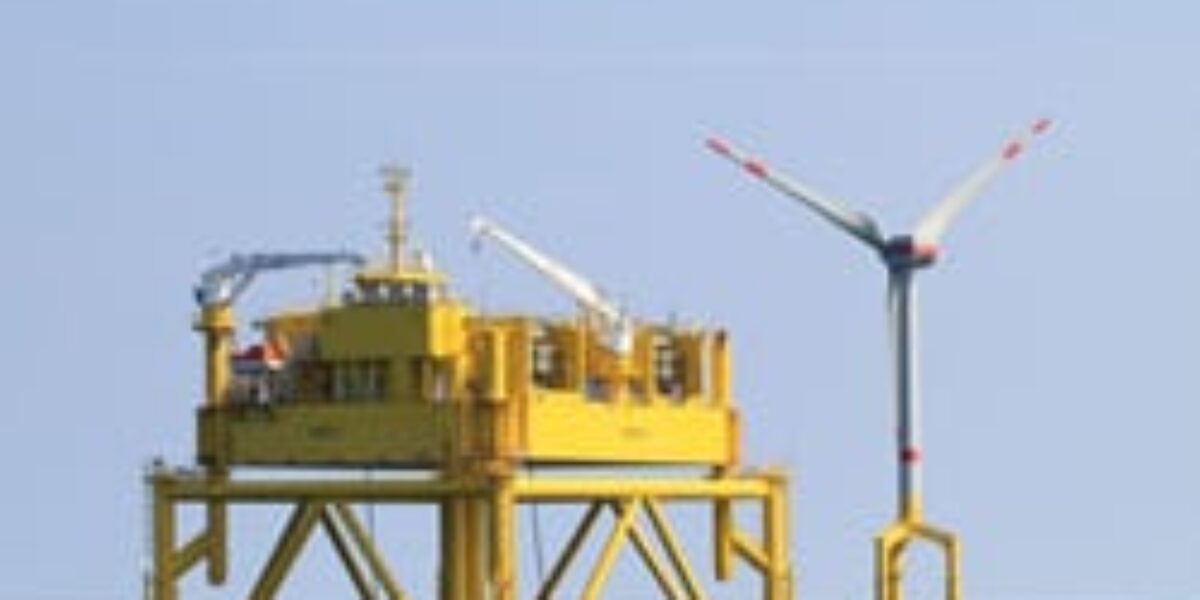Blown out of proportion – Germany’s wind energy reaches gale force
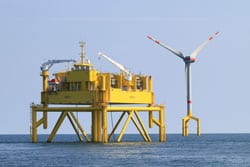 Emden in Lower Saxony is the third largest North Sea port and Germany’s western-most seaport. Volkswagen operates a large plant here with a workforce of 10,000 – consequently, cars are the principle cargo with nearly 1m marques being exported from Emden annually. The city is no stranger to commerce and economics.
Emden in Lower Saxony is the third largest North Sea port and Germany’s western-most seaport. Volkswagen operates a large plant here with a workforce of 10,000 – consequently, cars are the principle cargo with nearly 1m marques being exported from Emden annually. The city is no stranger to commerce and economics.
However, it’s the clean energy industry that’s really piquing investor interest and giving Emden a whole new dimension. From here and up the coast is one of the world’s largest concentrations of wind farms. Needless to say, Germany’s long mechanical and electronic engineering tradition is the backbone underpinning Emden’s current strong position. This region is the unequivocal vanguard of technological development.
Emden benefits in several ways from renewable energies. It provides employment, tax income, and thus prosperity for the city of Emden,”
“Wind energy is without doubt key to Germany’s clean energy future,” explains Thomas Grigoleit, Director Renewable Energies & Resources, Germany Trade & Invest. “As the European market and technology leader, companies from all over the world find promising business opportunities here.”
Alwin Brinkman, Lord Mayor of Seehafanstadt Emden, is equally enthusiastic.
“Emden benefits in several ways from renewable energies. It provides employment, tax income, and thus prosperity for the city of Emden,” he explains.
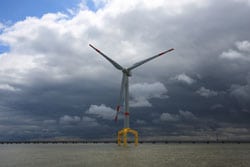 “Professionals have the opportunity to settle here in our excellent conditions; the city benefits significantly from the resulting demographic development. The research at the technical college in Emden concentrates on energy efficiency, and has excellent contacts between science and economy. The result is outstanding possibilities to further develop the field of offshore energy supply. Last but not least, Emden benefits from the reduction in CO2 and avoiding rising water levels.”
“Professionals have the opportunity to settle here in our excellent conditions; the city benefits significantly from the resulting demographic development. The research at the technical college in Emden concentrates on energy efficiency, and has excellent contacts between science and economy. The result is outstanding possibilities to further develop the field of offshore energy supply. Last but not least, Emden benefits from the reduction in CO2 and avoiding rising water levels.”
How refreshing to see a decisive point of view over a clean energy source that causes so much consternation, confusion, and ‘flip-floppery’ from British policy makers. But then Germany can always be relied on for pragmatism rather than populism.
It’s almost as if Germany has it all sewn up; their central position also makes it an ideal location for European onshore and offshore markets alike. Excellent investment environments in places like Emden have led wind energy companies from around the world wishing to base their operations in Germany.
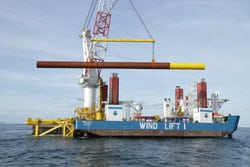 The upshot is an enticing cloud of facts: Germany is now Nº 1 in the wind energy market in Europe, with 12% of global installed capacity in 2011. It employs around 20% of the global wind industry workforce – that’s just shy of 100,000 employees. Germany’s installed a total capacity 30,000 Mega Watts by the end of 2011 – an 30% increase on the previous year. Wind energy now accounts for 10% of Germany’s net electrical energy consumption.
The upshot is an enticing cloud of facts: Germany is now Nº 1 in the wind energy market in Europe, with 12% of global installed capacity in 2011. It employs around 20% of the global wind industry workforce – that’s just shy of 100,000 employees. Germany’s installed a total capacity 30,000 Mega Watts by the end of 2011 – an 30% increase on the previous year. Wind energy now accounts for 10% of Germany’s net electrical energy consumption.
Now Germany has rejected any new development of nuclear energy, the nation has thrown its weight behind wind energy. Market studies show that international companies consider Germany to be one of the current and future – alongside China and the USA – most important wind energy markets worldwide.
The potential for offshore wind is enormous and an increasing number of offshore related industrial clusters and start-ups reflect the unparalleled location economies of Germany’s coastline, for the European offshore market. The most successful example of these clean energy companies being BARD
Since 2003, the BARD Group has stood at the forefront in developing new offshore energy resources. The manufacturing arm is based in Emden and employs upwards of 500 staff and manufactures rotor blades and glass fibre reinforced plastic components for offshore wind energy converters. The operation also provides assembly services for wind energy converters.
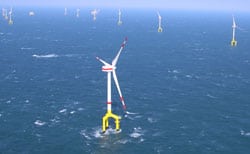 The company has already begun series production of its BARD 5.0 wind turbine and BARD Offshore 1, the company’s first 400-MW North Sea offshore wind farm that is expected to reach completion this year. This 80-turbine wind farm will be located 100 km north of the isle Borkum in water up to 40m deep.
The company has already begun series production of its BARD 5.0 wind turbine and BARD Offshore 1, the company’s first 400-MW North Sea offshore wind farm that is expected to reach completion this year. This 80-turbine wind farm will be located 100 km north of the isle Borkum in water up to 40m deep.
The gear driven pitch-controlled variable speed BARD 5.0 offshore turbine was developed in a record one-year timeframe. With a top head mass of 425 tonnes, the turbine is a true heavy weight, and each of the nearly 60-meter long blades features a 28.5-tonne mass.
BARD’s Emden production line is where turbine assembly and the manufacturing of BARD 61 rotor blades takes place. Company headquarters and project development department are in Bremen.
Foreign companies have also located themselves to the region, among them French giant Areva and US-based General Electric (GE). As a consequence, Germany’s key seaports are transforming thanks to multi-million dollar investments facilitated by Germany Trade & Invest, gearing toward the offshore industry. With two of Europe’s top four busiest ports located in Germany, companies have access to a well developed infrastructure.
“Although there are still a number of unanswered questions, the expansion of offshore wind in Germany is an incredible opportunity for foreign companies. Support for renewable energy in Germany is unwavering, meaning that investors benefit from a secure business environment,” said Anne Bräutigam, wind industry expert at Germany Trade & Invest in Berlin.
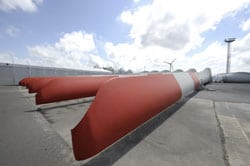 Emden is the third largest North Sea port and at the same time Germany’s western-most seaport, located at the north bank of the River Ems. A modern and highly-efficient universal port with excellent future prospects, the port consists of two parts, the tidal open outer harbour and the non-tidal inner harbour.
Emden is the third largest North Sea port and at the same time Germany’s western-most seaport, located at the north bank of the River Ems. A modern and highly-efficient universal port with excellent future prospects, the port consists of two parts, the tidal open outer harbour and the non-tidal inner harbour.
Additionally, there are modern and highly-efficient quay facilities and terminals for the handling of solid and liquid goods of all kinds. Ample storage space is available in close proximity to the quays. There are several transhipment companies competing in the port. Public quay facilities are available to all existing and future commercial users.
The strength of Emden’s port lies in the considerable reserves of space. Especially Wybelsumer Polder has areas to offer which are particularly large with possibilities for development which can speedily be implemented. Altogether there are 550 hectares at your disposal in this area. Some of these spaces have already been approved under building law and development could start immediately.
With all the interest in Emden at the moment, space in Emden will soon only be available at a premium.
“So far the Emden harbour has been used to capacity,” says Alwin Brinkman, Lord Mayor of Seehafanstadt Emden. “Areas further westward are being developed in Rysumer Nacken which are beinng explored for offshore enterprises. With the water being 12m deep, it provides perfect conditions for offshore activities.”


